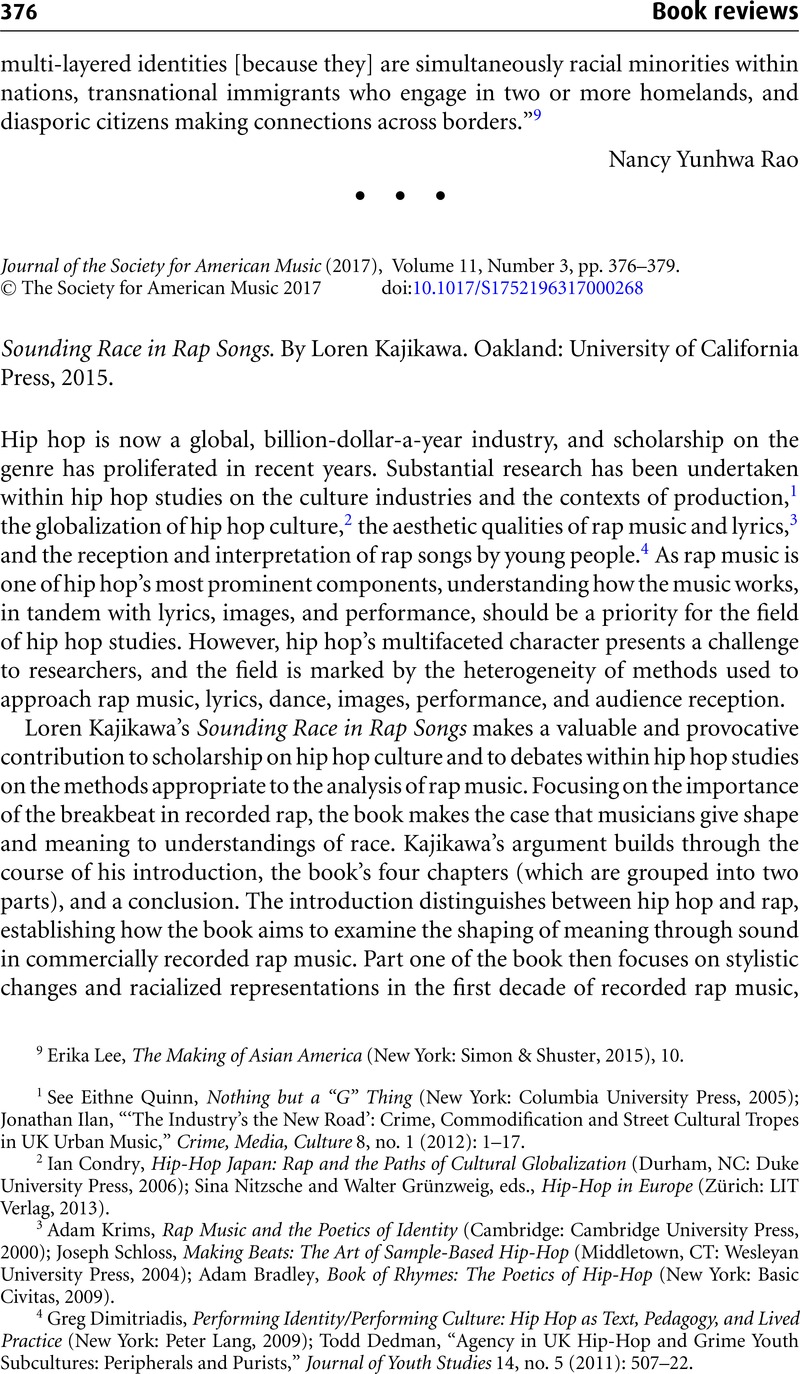No CrossRef data available.
Article contents
Sounding Race in Rap Songs. By Loren Kajikawa . Oakland: University of California Press, 2015.
Published online by Cambridge University Press: 23 August 2017
Abstract

- Type
- Book Review
- Information
- Copyright
- Copyright © The Society for American Music 2017
References
1 See Quinn, Eithne, Nothing but a “G” Thing (New York: Columbia University Press, 2005)Google Scholar; Ilan, Jonathan, “‘The Industry's the New Road’: Crime, Commodification and Street Cultural Tropes in UK Urban Music,” Crime, Media, Culture 8, no. 1 (2012): 1–17 Google Scholar.
2 Condry, Ian, Hip-Hop Japan: Rap and the Paths of Cultural Globalization (Durham, NC: Duke University Press, 2006)Google Scholar; Nitzsche, Sina and Grünzweig, Walter, eds., Hip-Hop in Europe (Zürich: LIT Verlag, 2013)Google Scholar.
3 Krims, Adam, Rap Music and the Poetics of Identity (Cambridge: Cambridge University Press, 2000)Google Scholar; Schloss, Joseph, Making Beats: The Art of Sample-Based Hip-Hop (Middletown, CT: Wesleyan University Press, 2004)Google Scholar; Bradley, Adam, Book of Rhymes: The Poetics of Hip-Hop (New York: Basic Civitas, 2009)Google Scholar.
4 Dimitriadis, Greg, Performing Identity/Performing Culture: Hip Hop as Text, Pedagogy, and Lived Practice (New York: Peter Lang, 2009)Google Scholar; Dedman, Todd, “Agency in UK Hip-Hop and Grime Youth Subcultures: Peripherals and Purists,” Journal of Youth Studies 14, no. 5 (2011): 507–22Google Scholar.
5 The conclusion, rather more briefly, addresses the work of the Chinese American rapper, Jin.




